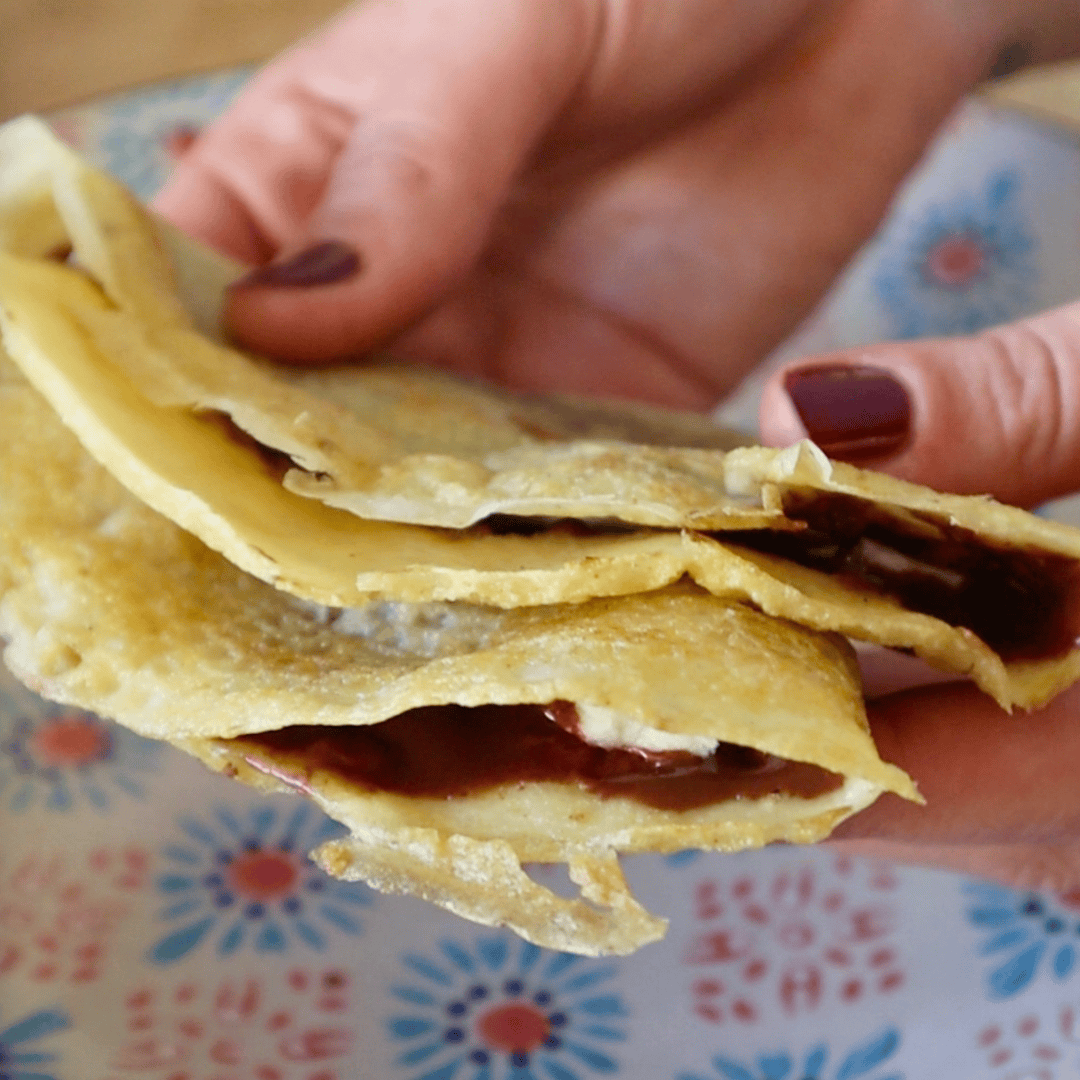Have you run out of nutritional yeast? Or you can’t find it near you? No problem! Here are the best nutritional yeast substitutes you can use instead.

Nutritional yeast, also called “nooch” is a popular ingredient in vegan and vegetarian cuisine, used for its cheesy and nutty taste.
I personally love using it to add a flavour booster to my recipes. It’s something I always have in my pantry, it can be quite addictive sprinkled on pasta or mixed in sauces.
Nutritional yeast also has remarkable nutritional profile, which includes high levels of protein, minerals, and B vitamins.
It is a great addition to soups, sauces, and dressings, among other foods. But there are times when nutritional yeast needs to be replaced, because of dietary limitations, allergies, or just because you’re running out of it in your pantry.

When talking about substitutes, it’s unlikely that we’ll find super close substitutes for nutritional yeast, but there are a range of ingredients that are adequate substitutes.
In this article we explore the range of substitutes that each have their own distinct tastes and nutritional advantages, from miso’s savoury depth and marmite’s umami punch.
Where do buy nutritional yeast?
You can find nutritional yeast in most big supermarkets (depending on where you live) at health stores and online. Check out nutrtional yeast on Amazon
What is nutritional yeast?
Nutritional yeast is a deactivated yeast, usually it is a strain of Saccharomyces cerevisiae, a yeast that is used in baking and brewing.
Unlike active yeast used for those purposes, nutritional yeast is pasteurized and dried, so it is inactive. Since it’s inactive, it will not react the same way as the one used in bread.
The result is flakes or a powder, yellow or beige, that is packed with flavours and nutrients.
I love to use nutritional yeast in many dishes. It has a super uique taste and it’s great for enhancing dishes like sacues, pastas, to make vegan cheeses and spreads and so much more.
What does nutritional yeast taste like?
It’s a bit hard to describe the taste of nutritional yeast. It does have a distinctive taste that is often described as cheesy, nutty, and slightly savory. It’s used to add a cheesy and umami taste to dishes.
It’s in fact a popular ingredient among vegans and vegetarians who seek to replicate the taste of cheese in their dishes without using dairy products.
The umami notes in nutritional yeast contribute to its appeal, adding depth and richness to a variety of foods. This makes it an excellent addition to sauces, dressings, soups, and popcorn, where its unique flavor can enhance the overall taste and provide a satisfying, savory experience.
Why Substitute Nutritional Yeast?
There are a few key reasons why someone may want to use a substitute for nutritional yeast in recipes:
- Not available where you live
- No idea where to get it
- Unsure about what it is
- You run out of it
- It’s out of stock
- More expensive than regular condiments
We have all been there. You’re following a recipe, and then you get to the “nutritional yeast” in the ingredient list. Maybe you don’t know what it is, you’re not sure where to get it or you’ve simply run out. So even without it, you can still prepare your favorite vegan (or non vegan) dishes.
Nutritional Yeast Substitutes
Vegan Parmesan/Cheese

Good for: toppings, sauces
You might think, if I don’t have nutritional yeast why would I have vegan parmesan? Fair enough, but if you’re using nutritional yeast as a parmesan alternative the closest substitute will in fact be vegan parmesan.
It’s the most cheesy and similar alternative. Any vegan cheese will be a good substitute to help you give it a similar flavour profile. Often nutritional yeast is among the ingredients of vegan cheese.
Yeast Extract – Marmite/Vegemite

Good for: sauces, soups, gravies,marinades and stews (not toppings)
Yeast Extract is a yeast extract. It’s taste is descirbed as umami, savoury, salty and earthy. It’s popular in the UK and AUS and it’s an attractive alternative to nutritional yeast in a wide range of culinary applications because of its strong, savoury flavour and rich nutritional profile.
Yeast Extract is probaly the closes you can get to nutrtional yeast, although the uses vary. Nutritional yeast comes in a powder or flakes so can be sprinkled, mamrite is sticky spread, so it will work as a substitue only when it’s mixed with something else.
Yeast Extract works well used in small amounts to add depth to sauces, soups, gravies,marinades and stews. The flavour is intense, so start with a small amount and then adjust to taste
Miso Paste

Good for: sauces, soups, gravies,marinades and stews (not toppings)
Miso is a fermented soybean paste, is another good substitute. It has a savory, slightly tangy flavor that adds complexity to dishes. It can help give that cheesy nutty taste that nutritional yeast is known for.
It can be used in salad dressings, soups and marinades. It is better to use it in dishes where it can dissolve or be blended with something else, such as soups and sauces. Miso paste is also quite salty, so make sure to reduce the amount of salt used.
It also works well in vegan cheese recipes and as a flavor enhancer and fermenting agent and in many other dishes.
Light miso (shiro miso) is more subtle, red miso is stronger and saltier and dark miso is more hearty.
Cashews

Good for: sauces, cheese, spread, toppings, soups and stews
Cashews provide a creamy texture and mildly sweet, nutty flavor. Soaked and blended cashews can create a creamy base for vegan cheeses, sauces, and spreads. They’re great for vegan cheese in particular and many vegan cheese are in fact made of cashews.
They can also be used to thicken soups and stews, adding a rich and satisfying texture. Blended cashews combined with miso, spices like garlic powder and herbs are a perfect vegan parmesan alternative.
Mushroom Powder

Good for: sauces, soups and stews
Mushroom powder, made from dried and ground mushrooms, offers a deep umami flavor similar to that of nutritional yeast. It is also rich in vitamins, minerals, and antioxidants.
Mushroom powder can be added to soups, sauces, and gravies to enhance their savory profiles. It can also be mixed into spice blends or used as a seasoning for roasted vegetables and similar dishes.
Soy Sauce or Liquid Aminos

Good for: sauces, soups, marinades and stews
Soy sauce and liquid aminos offer a salty, umami flavor that can enhance many dishes. They contain amino acids and trace minerals, with liquid aminos being a gluten-free alternative.
Soy sauce is made from fermented soybeans, and it is a liquid and not flakes, so it’s quite a different ingredient, texturally and nutritionally.
Nevertheless, it’s a great flavour enhancer, as well as being a staple item found in most kitchens and is utilised in both vegan and non-vegan recipes.
Soy sauce and liquid aminos can be used in marinades, dressings, and sauces. They are particularly effective in Asian-inspired dishes but can also be used to boost the flavor of soups, stews, and casseroles.
Brewer’s Yeast

Good for: sauces, soups, marinades and stews
Brewer’s yeast is often confused with nutritional yeast, but it has a more bitter taste. They are both created from the Saccharomyces cerevisiae species.
Given that they are both leftovers of the brewing process, they have a similar origin. Like nutritional yeast, it’s an inactive form of a fungus and it’s used in beer making.
Their consistency and flavour, however, are different. Brewer’s yeast has a more bitter flavour, whereas nutritional yeast adds a cheesy, nutty flavour. It offers a variety of proteins, B12, and amino acids and works well in various savoury meals.
Due to its bitterness, brewer’s yeast is best used in small quantities. It can be added to soups, stews, and baked goods to add flavour.
Sunflower seeds

Good for: sauces, soups, topping
The cheesy, nutty flavour of nutritional yeast can be achieved by blending sunflower seeds with other ingredients like garlic granules and salt. They have a milder flavour, but are still be a good replacement.
It’s best to toast them and blend them in a food processor before combining them with other ingredients.
Bouillon Cubes or Concentrate

Good for: sauces, soups, stews, marinades
Bouillon cubes or liquid bouillon concentrate are highly concentrated flavoring agents that can add depth to dishes. They often contain salt, spices, and sometimes MSG, which contributes to their umami flavor.
Bouillon can be dissolved in water to create a flavorful broth or added directly to soups, stews, and sauces. They are also useful for seasoning grains like rice and quinoa during cooking
Garlic Powder

Good for: sauces, soups, stews, marinades
I always have garlic powder on hand, so you can also dig into your spice cupboard for it if you want to add some savoury or umami flavour notes to a recipe without nutritional yeast!
Any recipe that uses nutritional yeast, such as pasta, soup, or dressing, can benefit from the addition of garlic powder. It does not give a cheesy taste but it can help give more flavour where nutritional yeast is usually used.
FAQS
Can I omit nutritional yeast in a recipe?
It depends on the recipe but yes. Nutritional yeast is a true flavour booster and it brings a savoury, cheesy and nutty paste. If you don’t have it, the above mentioned substitutes such as marmite, crushed cashews and miso can do the trick.
Is nutritional yeast gluten free?
Yes, nutritional yeast is gluten free. It can be used by those with celiac or gluten intolerance. Some of the above mentioned substitutes though, are not gluten free.
Is nutritional yeast a cheese substitute?
Yes and no. Nutritional yeast can be used to give things a cheesy taste, it can be used to make vegan parmesan, vegan spread and cheeses but it does not directly replace hard cheese for example.
What’s a good nutritional yeast substitute in pasta?
For pasta toppings, a good substitute is either vegan parmesan cheese, or blended cashews. To add umami inside pasta sauces, soy sauce, miso or yeast extract work great.
Final Thoughts
Nutritional yeast is a beloved ingredient for2 its unique flavor and nutritional profile, but there are numerous substitutes available for those who need or want to explore alternatives.
Each substitute offers its own distinct flavors and benefits, allowing for creativity in the kitchen. Whether using Marmite for its robust umami, cashews for their creamy texture, or mushroom powder for its earthy depth, these alternatives can provide satisfying results in a variety of dishes.
Experimenting with these substitutes can open up new culinary possibilities while ensuring you don’t miss out on the rich, savory goodness that nutritional yeast provides.









